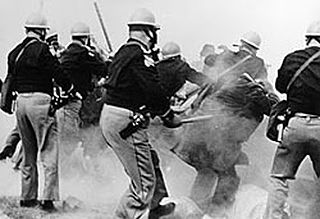
The Selma to Montgomery marches were three protest marches, held in 1965, along the 54-mile (87 km) highway from Selma, Alabama, to the state capital of Montgomery. The marches were organized by nonviolent activists to demonstrate the desire of African-American citizens to exercise their constitutional right to vote, in defiance of segregationist repression; they were part of a broader voting rights movement underway in Selma and throughout the American South. By highlighting racial injustice, they contributed to passage that year of the Voting Rights Act, a landmark federal achievement of the civil rights movement.

Dexter Avenue Baptist Church is a Baptist church in Montgomery, Alabama, United States, affiliated with the Progressive National Baptist Convention. The church was designated as a National Historic Landmark in 1974 because of its importance in the civil rights movement and American history. In 1978 the official name was changed to the Dexter Avenue King Memorial Baptist Church, in memory of Dr. Martin Luther King Jr., who was pastor there and helped organize the Montgomery bus boycott in 1955 during the civil rights era. The church is located steps away from the Alabama State Capitol.

The Selma to Montgomery National Historic Trail is a 54-mile (87 km) National Historic Trail in Alabama. It commemorates and marks the journey of the participants of the 1965 Selma to Montgomery marches in support of the Voting Rights Act.

The Mount Zion AME Church is a historic church in Jacksonville, Florida, United States. It is located at 201 East Beaver Street. On December 30, 1992, it was added to the U.S. National Register of Historic Places. The "AME" is an abbreviation of African Methodist Episcopal, the religious denomination.

Brown Chapel A.M.E. Church is a church at 410 Martin Luther King Jr. Boulevard in Selma, Alabama, United States. This church was a starting point for the Selma to Montgomery marches in 1965 and, as the meeting place and offices of the Southern Christian Leadership Conference (SCLC) during the Selma Movement, played a major role in the events that led to the adoption of the Voting Rights Act of 1965. The nation's reaction to Selma's "Bloody Sunday" march is widely credited with making the passage of the Voting Rights Act politically viable in the United States Congress.

The City of St. Jude is a 36-acre (15 ha) campus in Montgomery, Alabama, hosting a high school, hospital, and Catholic church, and was founded in 1934 by Fr Harold Purcell with the aim of bringing "light, hope and dignity to the poor."

The Frank M. Johnson Jr. Federal Building and United States Courthouse is a United States federal building in Montgomery, Alabama, completed in 1933 and primarily used as a courthouse of the United States District Court for the Middle District of Alabama. The building is also known as United States Post Office and Courthouse—Montgomery and listed under that name on the National Register of Historic Places. In 1992, it was renamed by the United States Congress in honor of Frank Minis Johnson, who had served as both a district court judge and a court of appeals judge. It was designated a National Historic Landmark in 2015.
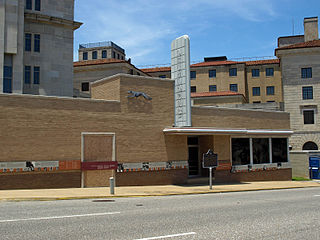
The Freedom Rides Museum is located at 210 South Court Street in Montgomery, Alabama, in the building which was until 1995 the Montgomery Greyhound Bus Station. It was the site of a violent attack on participants in the 1961 Freedom Ride during the Civil Rights Movement. The May 1961 assaults, carried out by a mob of white protesters who confronted the civil rights activists, "shocked the nation and led the Kennedy Administration to side with civil rights protesters for the first time."

The Stone Plantation, also known as the Young Plantation and the Barton Warren Stone House, is a historic Greek Revival-style plantation house and one surviving outbuilding along the Old Selma Road on the outskirts of Montgomery, Alabama. It was added to the Alabama Register of Landmarks and Heritage on September 28, 2000, and to the National Register of Historic Places on December 31, 2001.
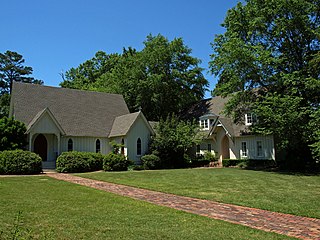
Grace Episcopal Church is a historic Episcopal church in Mount Meigs, Alabama. The Carpenter Gothic structure was built in 1892. The building was placed on the Alabama Register of Landmarks and Heritage on January 29, 1980, and the National Register of Historic Places on February 19, 1982.

Old Ship African Methodist Episcopal Zion Church is a historic African Methodist Episcopal Zion Church in Montgomery, Alabama. It is the oldest African American church congregation in the city, established in 1852. The current Classical Revival-style building was designed by Jim Alexander and was completed in 1918. It is the fourth building the congregation has erected at this location. Scenes from the 1982 television movie, Sister, Sister, were shot at the church. It was placed on the Alabama Register of Landmarks and Heritage on March 3, 1976, and the National Register of Historic Places on January 24, 1991.

Mount Zion Cemetery/Female Union Band Society Cemetery is a historic cemetery located at 27th Street NW and Mill Road NW in the Georgetown neighborhood of Washington, D.C., in the United States. The cemetery is actually two adjoining burial grounds: the Mount Zion Cemetery and Female Union Band Society Cemetery. Together these cemeteries occupy approximately three and a half acres of land. The property fronts Mill Road NW and overlooks Rock Creek Park to the rear. Mount Zion Cemetery, positioned to the East, is approximately 67,300 square feet in area; the Female Union Band Cemetery, situated to the West, contains approximately 66,500 square feet. Mount Zion Cemetery, founded in 1808 as The Old Methodist Burial Ground, was leased property later sold to Mount Zion United Methodist Church. Although the cemetery buried both White and Black persons since its inception, it served an almost exclusively African American population after 1849. In 1842, the Female Union Band Society purchased the western lot to establish a secular burying ground for African Americans. Both cemeteries were abandoned by 1950.
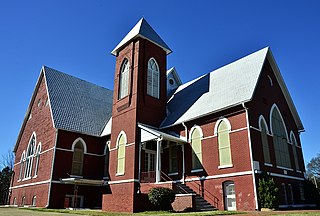
First Baptist Church is a historic church at 709 Martin Luther King, Jr. Street in Selma, Alabama. A historically African American Baptist church, it was built in the Gothic Revival style in 1894 and known for its association with the Civil Rights Movement. It was added to the National Register of Historic Places in 1979.

St. Luke AME Zion Church is a historic African Methodist Episcopal Zion (AMEZ) church at 3937 12th Ave. North in Birmingham, Alabama. It was significant in the civil rights movement. It was added to the National Register of Historic Places in 2005.
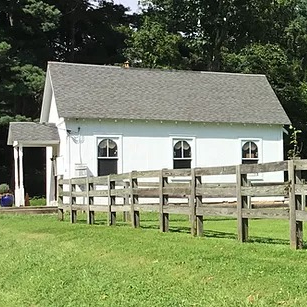
The Stoutsburg Sourland African American Museum (SSAAM) is a history museum located in the Skillman section of Montgomery Township, New Jersey, United States. The museum is located at the Mount Zion African Methodist Episcopal Church, an African Methodist Episcopal church constructed in 1899. The church was added to the National Register of Historic Places on June 7, 2021.
















